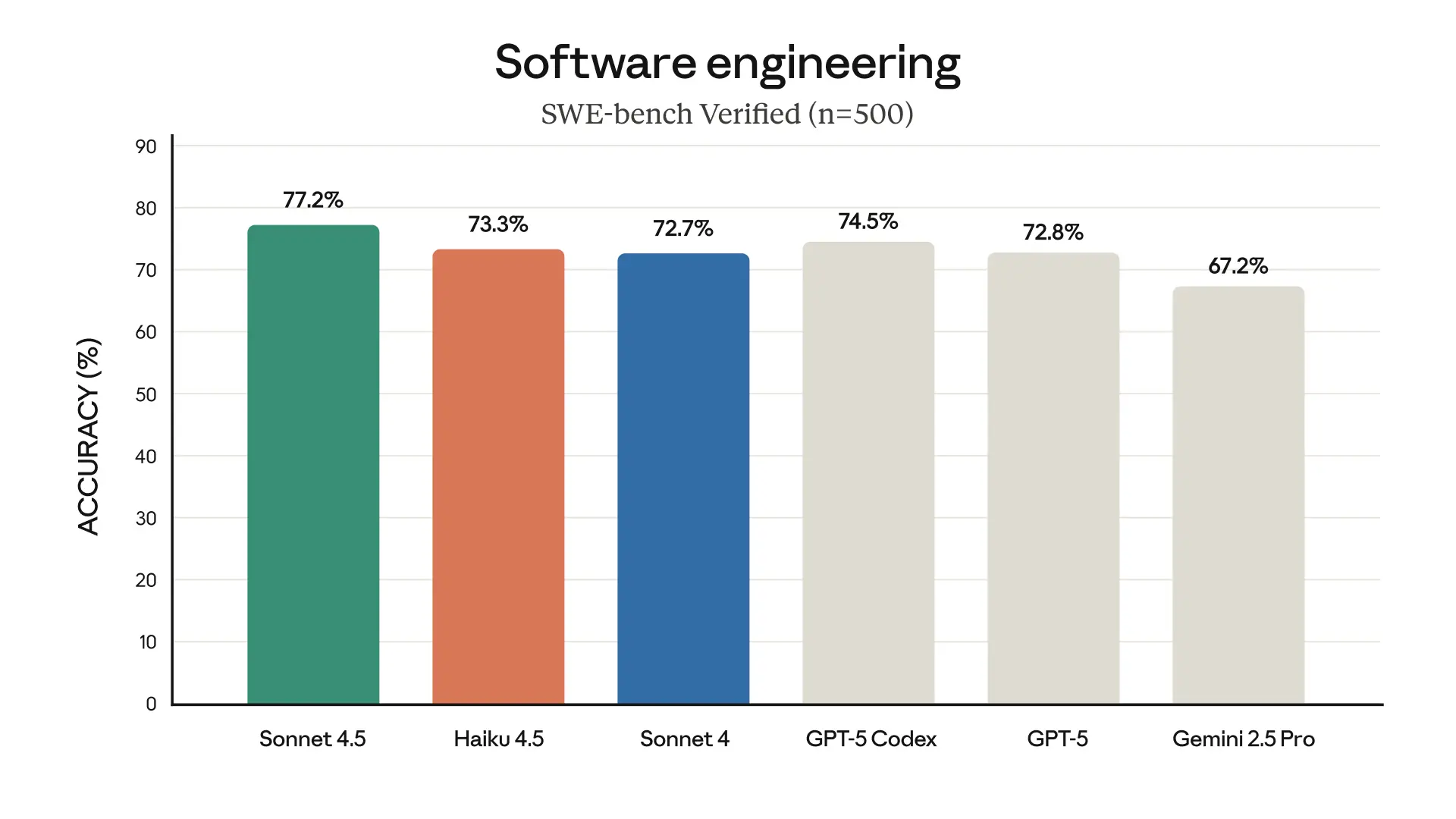Default versions:
- claude-haiku-4-5-20251001
- claude-haiku-4-5-20251001-thinking
Claudecode versions(cheaper):
- claudecode/claude-haiku-4-5-20251001
- claudecode/claude-haiku-4-5-20251001-thinking
An Introduction to the Claude Haiku 4.5 Model
On October 16, 2025, the release of Claude Haiku 4.5 was announced, a new small model available to all users. Positioned as a highly efficient and fast model, it aims to provide performance comparable to previous state-of-the-art models at a fraction of the cost.

Performance and Use Cases
Claude Haiku 4.5 is designed to balance intelligence, speed, and cost-effectiveness. According to the provided information, it delivers coding performance similar to Claude Sonnet 4, but at one-third the cost and more than twice the speed. In certain tasks, such as computer usage, Haiku 4.5 even surpasses the performance of Sonnet 4.
This combination of high intelligence and speed makes it particularly suitable for real-time, low-latency applications. Key use cases include chat assistants, customer service agents, and pair programming. For users of Claude Code, Haiku 4.5 is expected to make the coding experience more responsive, from rapid prototyping to multi-agent projects.
Positioning within the Claude Model Family
While Claude Sonnet 4.5 remains the frontier model, Claude Haiku 4.5 serves as a new option for users who require near-frontier performance with greater cost-efficiency. The models can also be used in conjunction; for example, Sonnet 4.5 can be used to break down a complex problem and then orchestrate a team of multiple Haiku 4.5 models to execute subtasks in parallel.
Availability and Pricing
Claude Haiku 4.5 is available on the Claude API, Amazon Bedrock, and Google Cloud’s Vertex AI. It is also integrated into Claude Code and other applications. The pricing is set at $1 per million input tokens and $5 per million output tokens, making it the most economical price point offered.
Benchmarks and Safety
The model’s capabilities are supported by its performance across several industry benchmarks, including SWE-bench Verified, Terminal-Bench, τ2-bench, AIME, OSWorld, and MMMLU.
In terms of safety, Claude Haiku 4.5 underwent detailed evaluations and demonstrated low rates of concerning behaviors. It was found to be substantially more aligned than its predecessor, Haiku 3.5. According to automated alignment assessments, it showed a statistically significantly lower rate of misaligned behaviors than both Claude Sonnet 4.5 and Claude Opus 4.1, making it the safest model yet by this metric. Due to its limited risks in the context of chemical, biological, radiological, and nuclear (CBRN) weapons production, it has been released under the AI Safety Level 2 (ASL-2) standard, which is less restrictive than the ASL-3 classification for Sonnet 4.5 and Opus 4.1.
For complete technical details, evaluation results, and safety information, users are directed to the official Claude Haiku 4.5 system card, model page, and documentation.



